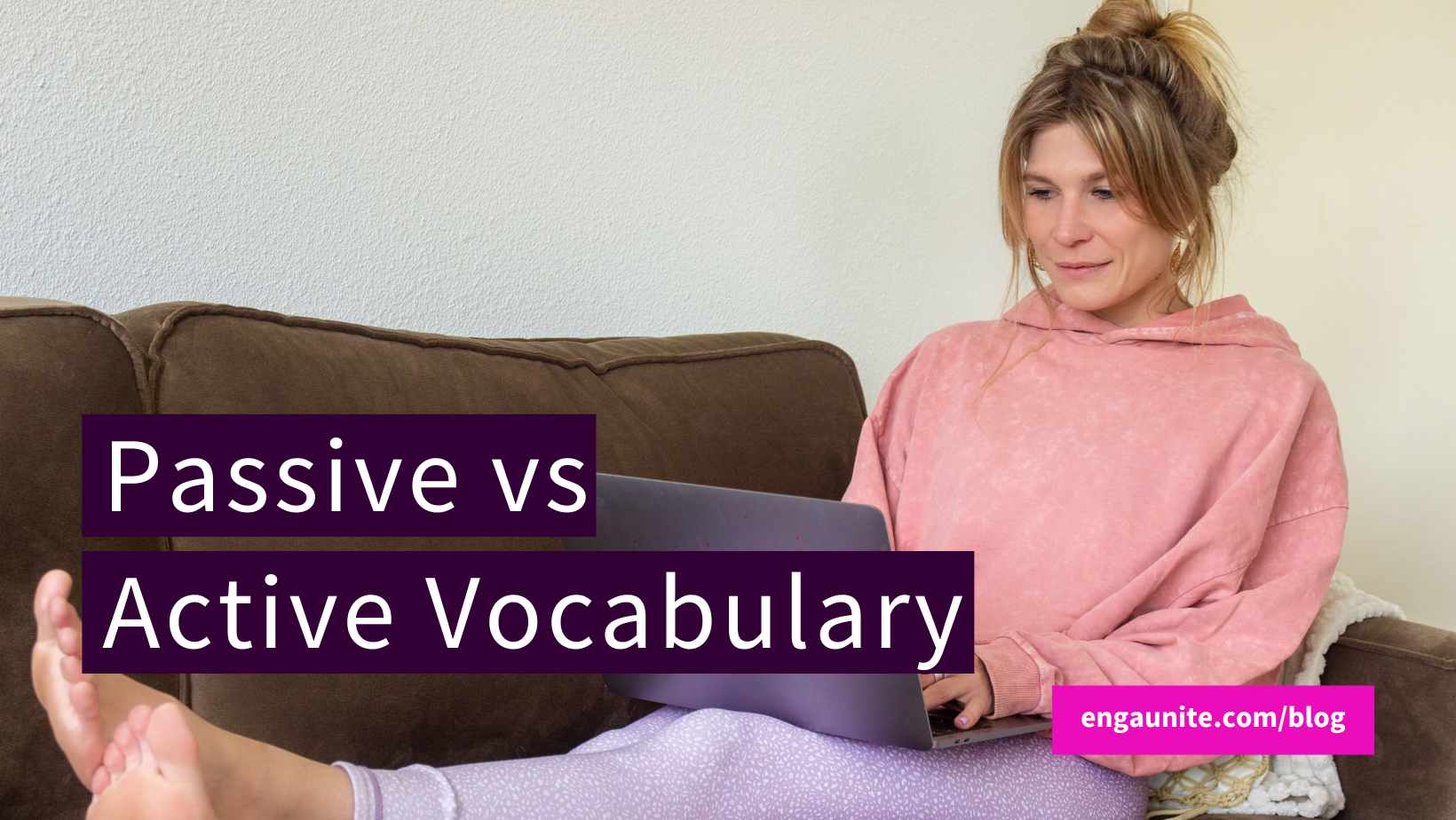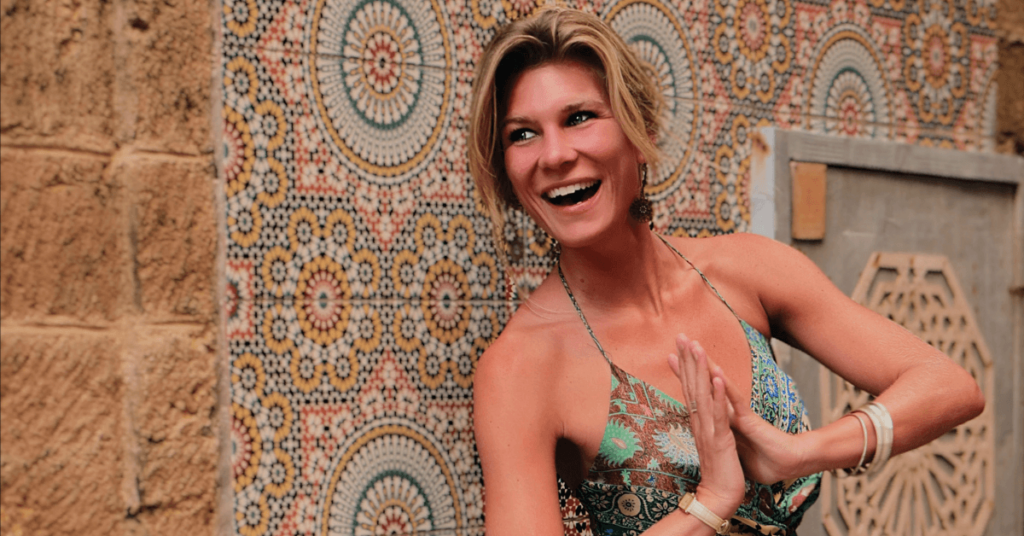Most language classes focus on the development of receptive and productive skills; hearing, reading, speaking and writing. But, as language teachers and avid language learners, we’ve observed that it requires more than that. The reason why language learning often feels like an obstacle is that there’s too much of a static approach; exam focus, textbook learning in which the material doesn’t relate to the student or there’s too little attention for effective vocabulary learning. In this blog, we’ll take a look at how your knowledge of passive and active vocabulary can immensely boost your language learning.
What is the difference between passive and active vocabulary?
Keen language learners learn new vocabulary every day. First, you learn to understand the word in context, recognise its spelling, and overtime, the more you read it or hear someone use it you start to understand the meaning and how it’s used in context. This is called passive vocabulary.
Passive vocabulary are all the words and expressions you see (read) and hear other people use. This includes the people around you, what you hear on TV, the internet, the radio, but also in films, lyrical music, and much more. In other words, passive vocabulary is produced by others but is subconsciously perceived and understood by you.
The words that belong to your passive vocabulary bank have the great potential to become active vocabulary. Active vocabulary are the words that you, next to understanding them, can also accurately use in your own speech or writing. These are the words that you’ve integrated in your communication and feel confident using.
The Collins dictionary defines passive vocabulary as all the words, collectively, that a person can understand. They describe active vocabulary as the total number of words a person uses in their speech and writing.
Needless to say that the number of words you can understand (passively) will always be bigger than the number of words you can use in your communication (actively).
How understanding the difference between passive and active vocabulary can improve your language learning
A lack of active vocabulary hinders learners from expressing their ideas clearly and fluently in their target language. This is what makes the right words take forever to come from your brain to your mouth. Passive vocabulary might help you understand the overall idea of a writing, a talk, or a conversation, but it is active vocabulary that helps you to actually communicate with others.
So, how could understanding the difference between active and passive vocabulary boost your language learning?
Once you are able to tell the difference, you will realise that learning vocabulary is all about becoming an independent learner so that you can gain confidence, fluency and make the language your own. That means you can actively produce your vocabulary instead of only understanding it. It helps you to take a step back from grammar and exam exercises and instead focus on learning what you need for your communication purposes. As well as learning how to speak as your authentic self and conveying your ideas, beliefs, opinions and much more, the way you truly want to. It’s a way of finding the words to express your personality and no longer feel like a stranger speaking a foreign language.
How do you make your passive vocabulary active as a yoga teacher?
When you are new to teaching yoga in English, it’s natural that a lot of your vocabulary will be passive at first. Most of the time, it simply is because you haven’t had the opportunity to use these words and expressions before. Think of the asana names, the anatomical terms for body parts, or the language for movement. You might understand the terms, expressions and vocabulary when you take yoga classes in English or watch videos on yogic topics, but all of this won’t become part of your active vocabulary until you take the plunge and start using it yourself.
So, to make your passive vocabulary active vocabulary, get out there.
To develop your passive vocabulary you need regular practice of all skills and constructive feedback. It’s not an overnight miracle. You need to put in the work.
Choose to consume materials that match the topics you teach or goals you have for your teaching career. Immerse yourself in the language, look up the words and expressions that are new to you in glossaries, dictionaries and other material to understand their meaning. Read books and articles, watch videos and listen to podcasts to observe how your passive vocabulary is used in context. Then, to increase your active vocabulary you can journal or write about those topics, practise teaching, or participate in tandem or conversation classes, for example Learning how your active and passive vocabulary work together is key to achieving fluency and start feeling confident teaching in the language you’re learning.
The Yoga Vocabulary Builder
At the end of the day, it’s key to have goals and choose the methods and strategies that best suit your learning style. There isn’t a rule on how to turn passive into active vocabulary, it mostly requires studying what you’ll truly need for your objectives, what resonates with you and gives you a sense or purpose. Then determination, making an effort, as well as timed repetition and constructive feedback.
Our Yoga Vocabulary Builder for non-native English speaking yoga teachers is designed to help you expand your knowledge of yogic terms and expressions so that you can cue effectively and offer well-rounded yoga classes in English. The builder helps you understand words in context and unlearn inappropriate words and phrases such as non-inclusive language and out-dated cues.
We’ve put together four steps to optimise your learning journey.
- Understand your learning style and find the techniques that help you learn and absorb new knowledge
- Find memorisation techniques that match your learning style and help you remember new vocabulary
- Define your teaching style and choose the right vocabulary in the right contexts for the purpose of each class or service you offer
- Discover new words and practise using them accurately in context to finally expand your vocabulary bank
I’d love for you to have the opportunity to kiss goodbye standardised learning and finally feel capable, knowledgeable and confident teaching and communicating in English. So, if you’re ready to elevate your expertise, check out the Yoga Vocabulary Builder here.


